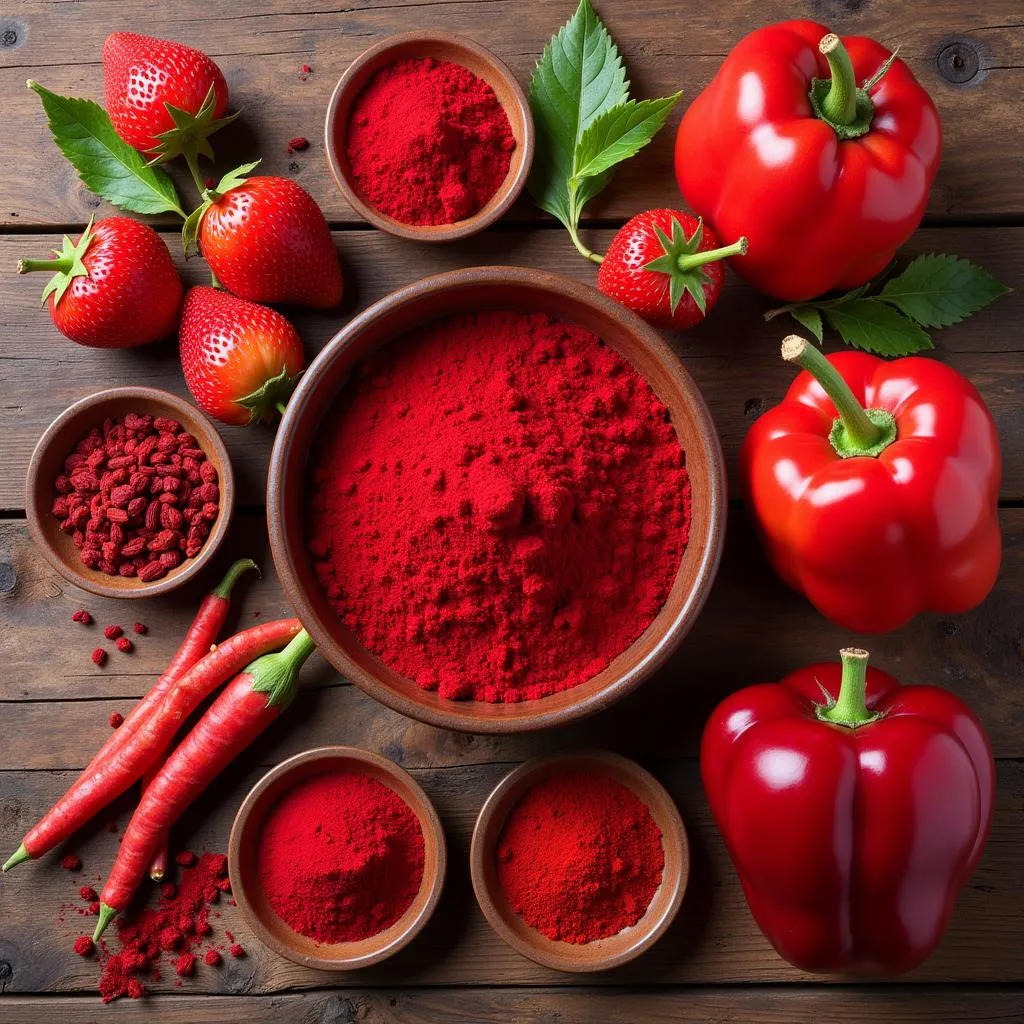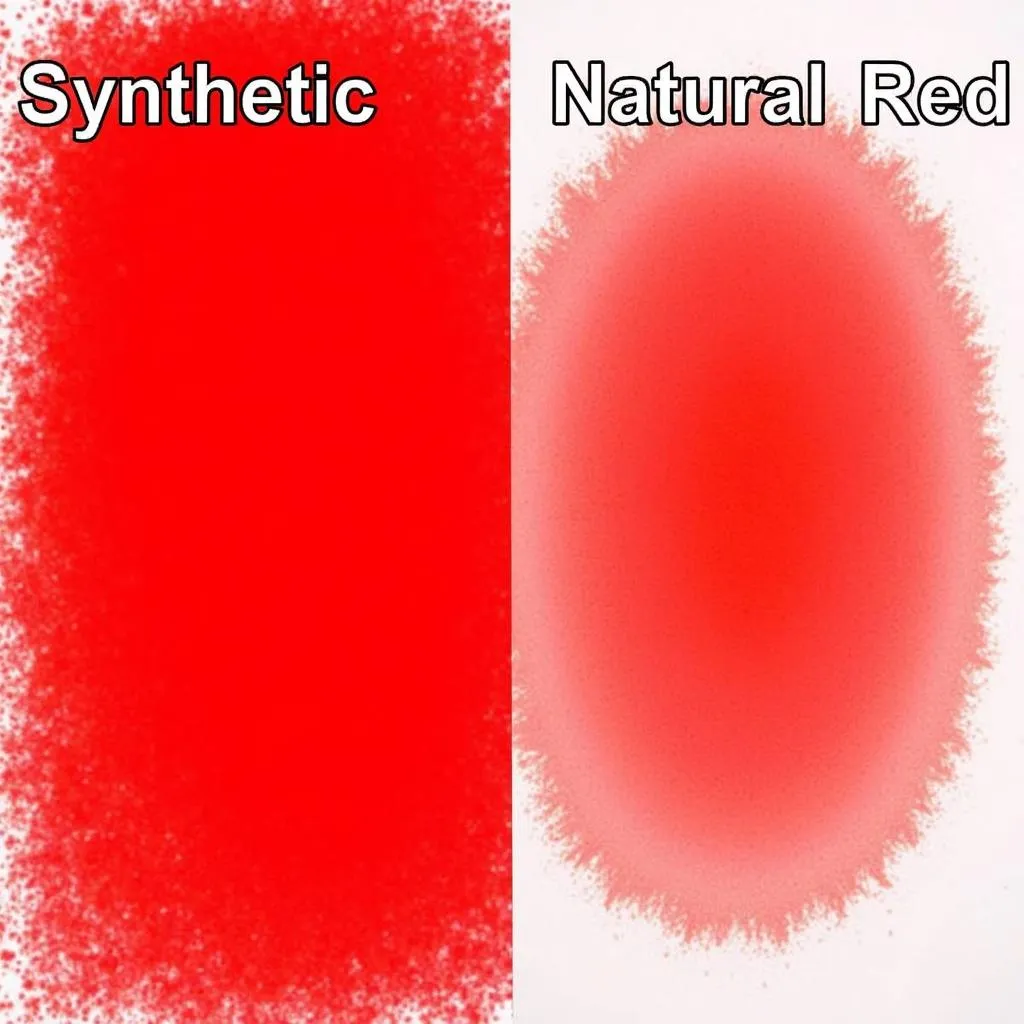Super Red Food Color. These three little words hold the power to transform ordinary treats into vibrant masterpieces. But what exactly is super red food color, and how can you harness its potential in your kitchen?
 Natural Red Food Coloring Ingredients
Natural Red Food Coloring Ingredients
Understanding Super Red Food Color: Beyond the Basics
Super red food color refers to a concentrated pigment used to add a rich, red hue to food and beverages. While synthetic versions exist, natural super red food colors derived from fruits, vegetables, and insects are gaining popularity.
Why the shift towards natural? Consumers are increasingly interested in cleaner labels and minimizing their intake of artificial ingredients.
Natural vs. Synthetic: Making the Right Choice
Choosing between natural and synthetic super red food color depends on your priorities.
- Synthetic: Often more affordable and offer a more intense, stable color that can withstand high temperatures.
- Natural: Aligns with clean eating preferences and minimizes exposure to artificial additives. However, natural colors can be more susceptible to fading with heat and light exposure.
 Comparing Synthetic and Natural Red Food Coloring
Comparing Synthetic and Natural Red Food Coloring
Diving into the World of Natural Red Color Sources
Nature offers a surprising array of ingredients for achieving that perfect shade of red:
- Beetroot: Earthy and vibrant, beetroot powder is a popular choice for adding a reddish-pink hue.
- Carmine: Derived from cochineal insects, carmine provides a deep, rich red, but may not be suitable for vegan diets.
- Red Cabbage: This versatile vegetable offers a range of colors from blue to red, depending on the pH level.
- Hibiscus: This flower boasts a tangy flavor and imparts a beautiful reddish-purple color.
Tips for Using Super Red Food Color Like a Pro
Ready to get creative with color? Keep these tips in mind:
- Start Small: A little goes a long way! Add color gradually until you achieve your desired shade.
- Heat Sensitivity: Natural colors can fade with prolonged heat exposure. Consider adding them towards the end of cooking.
- pH Matters: The acidity or alkalinity of your recipe can impact the final color.
- Storage: Store natural food colors in a cool, dark place to preserve their vibrancy.
Beyond Baking: Exploring Creative Applications
While super red food color is a baking staple, its versatility extends far beyond cakes and cookies. Think:
- Vibrant Cocktails: Elevate your mixology game with colorful cocktails.
- Homemade Playdough: Create safe and natural playdough for kids.
- DIY Bath Bombs: Add a pop of color to your relaxing bath time ritual.
Super Red Food Color: A World of Possibilities
Super red food color, whether natural or synthetic, opens a world of possibilities for adding visual appeal to your culinary creations. By understanding the nuances of each type and mastering a few simple techniques, you can transform your dishes from ordinary to extraordinary.
FAQ
1. Is super red food color safe to consume?
Both natural and synthetic food colors undergo rigorous safety testing and regulations. Always choose products from reputable brands and consume within recommended guidelines.
2. Can I substitute one type of red food coloring for another?
While possible, keep in mind that different sources have varying color intensities and heat stabilities. You may need to adjust quantities or cooking methods accordingly.
Need Help?
For personalized advice and assistance, contact our team at 02437655121, email us at minacones@gmail.com, or visit us at 3PGH+8R9, ĐT70A, thôn Trung, Bắc Từ Liêm, Hà Nội, Việt Nam. Our dedicated customer support team is available 24/7 to answer your queries.